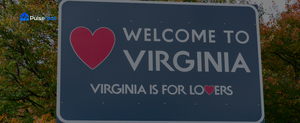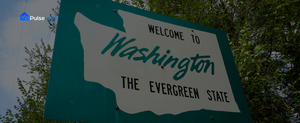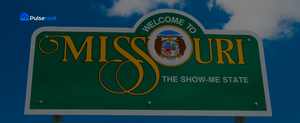Utah’s short-term rental (STR) market has undergone a significant transformation over the past few years, driven by changing travel behaviors, a booming tourism industry, and the rise of digital rental platforms like Airbnb and VRBO. With its world-renowned ski resorts, national parks, and thriving urban centers, Utah has become a hotspot for vacation rentals, attracting both investors and travelers alike.
However, this growth is not without its challenges. The increasing number of STRs has sparked debates on housing affordability, zoning regulations, and community impacts. In this in-depth analysis, we’ll explore the evolution of Utah’s STR market, the factors driving its expansion, and the top-performing STR markets based on occupancy rates, average daily rates (ADR), and revenue potential.
The Rapid Growth of Short-Term Rentals in Utah
1. Post-Pandemic Surge in Demand
The COVID-19 pandemic had a profound impact on the travel and hospitality industry. As people sought safer, private accommodations over hotels, the demand for STRs skyrocketed. Remote work trends also played a role, allowing people to stay longer in vacation homes while working remotely.
Between 2021 and 2023, the number of active STR listings in Utah grew by 39.4%, increasing from 16,803 to 23,428. This surge highlights a fundamental shift in consumer preferences, where travelers prioritize flexibility, home-like amenities, and location variety. The ability to rent an entire home, have access to a kitchen, and stay in residential neighborhoods rather than crowded hotel districts has increased the attractiveness of STRs for both short-term tourists and longer-term digital nomads.
2. STRs Are Concentrated in Tourism-Driven Locations
Utah’s stunning landscapes and recreational opportunities make it a prime location for vacation rentals. STRs tend to cluster in areas that attract year-round visitors, including ski towns, national park gateways, and urban centers.
Key statistics from 2023:
83.1% of STRs are located within 10 miles of a state or national park.
24.9% are within a ¼ mile of a ski resort.
Nearly 50% of all STRs are within 10 miles of a ski area.
This data underscores the importance of seasonal tourism in Utah’s STR market. Locations near Zion National Park, Park City, and Salt Lake City have consistently high occupancy rates due to year-round demand. The popularity of outdoor recreation, including hiking, skiing, and national park visits, ensures a steady influx of tourists looking for accommodations that offer more privacy and flexibility than hotels.
3. Impact on Housing Availability and Affordability
While STRs contribute to economic growth, they also impact housing affordability, particularly in high-tourism counties. The conversion of long-term rental properties into STRs reduces the availability of affordable housing for residents, leading to higher home prices and rental costs.
Housing Impact in Key Counties:
Summit County (home to Park City) saw 14.2 new STR listings for every 10 new residential units added between 2022 and 2023.
Grand County (which includes Moab) had 10.3 new STRs per 10 new residential units in the same period.
In urban areas like Salt Lake City, the STR share is lower (1.1% of total housing units), but it is increasing rapidly.
These trends highlight a growing need for balanced STR regulations, ensuring that communities benefit from tourism revenue without exacerbating housing shortages. Some cities have begun implementing policies to regulate STRs, such as licensing requirements, zoning restrictions, and limits on the number of rental nights per year.
Types of Short-Term Rentals in Utah
The Utah STR market consists of a variety of property types catering to different traveler preferences. Understanding these property types is crucial for investors looking to enter the market.
Apartments (40.8%) – Common in urban areas like Salt Lake City, Provo, and Ogden, where business travelers and short-term residents drive demand. Apartments offer lower overhead costs but can be subject to stricter HOA regulations.
Single-Family Homes (39.2%) – More prevalent in resort towns, suburbs, and national park gateways, appealing to families and large groups. These homes generate higher rental income but require more maintenance and upkeep.
Townhomes (13.1%) – Found in mixed urban and suburban settings, offering multi-room accommodation with home-like amenities. Townhomes strike a balance between space and affordability, making them a strong choice for mid-term stays.
Top 20 Short-Term Rental Markets in Utah
Utah offers diverse investment opportunities in its STR market. Below, we rank the top 20 STR markets based on listings, occupancy rates, ADR, and annual revenue.
1. Park City – The Luxury STR Capital
Listings: 2,283
Occupancy Rate: 56%
ADR: $355
Annual Revenue: $70,326
Why Invest? Home to Sundance Film Festival and world-class ski resorts, Park City dominates Utah’s STR market with high ADRs and strong seasonal demand. Investors can benefit from luxury vacationers willing to pay premium rates for high-end accommodations.
2. Salt Lake City – High Occupancy, Steady Returns
Listings: 1,937
Occupancy Rate: 74%
ADR: $106
Annual Revenue: $28,979
Why Invest? A hub for business travel, outdoor recreation, and urban tourism, Salt Lake City’s consistent demand makes it a stable investment. The city's proximity to ski resorts and national parks further enhances its rental appeal.
3. Saint George – A Growing STR Hotspot
Listings: 1,304
Occupancy Rate: 58%
ADR: $161
Annual Revenue: $33,788
Why Invest? Located near Zion National Park, Saint George attracts outdoor enthusiasts, offering a blend of affordability and profitability. Investors can capitalize on both short-term vacation rentals and long-term winter snowbird stays.
4. Washington – High Revenue Potential
Listings: 813
Occupancy Rate: 54%
ADR: $190
Annual Revenue: $37,824
Why Invest? Close to national parks and desert landscapes, Washington is a lucrative STR market with premium nightly rates. Its combination of low competition and high ADR makes it a great opportunity for new investors.
5. Hurricane – Outdoor Tourism Hub
Listings: 736
Occupancy Rate: 59%
ADR: $194
Annual Revenue: $40,816
Why Invest? A gateway to Zion National Park, Hurricane’s STR market benefits from year-round tourist demand. Its location makes it a prime base for adventurers and nature lovers.
6. Brian Head – Seasonal Ski Market
Listings: 543
Occupancy Rate: 40%
ADR: $148
Annual Revenue: $21,193
Why Invest? Brian Head is a top destination for skiers and snowboarders, drawing visitors during the winter season. While occupancy fluctuates, the high daily rates ensure profitability for investors.
7. Orem – A College Town Market
Listings: 359
Occupancy Rate: 70%
ADR: $100
Annual Revenue: $25,399
Why Invest? Orem benefits from proximity to universities and steady rental demand from students, visiting faculty, and business travelers.
8. Ogden – Budget-Friendly Market with Steady Demand
Listings: 311
Occupancy Rate: 62%
ADR: $100
Annual Revenue: $23,470
Why Invest? Affordable STR investment opportunity with year-round demand from outdoor adventurers and business travelers.
9. Millcreek – Strong Occupancy & Urban Appeal
Listings: 304
Occupancy Rate: 69%
ADR: $120
Annual Revenue: $31,370
Why Invest? Located near Salt Lake City, Millcreek offers easy access to urban amenities while maintaining a suburban charm.
10. Provo – College and Tech Hub
Listings: 301
Occupancy Rate: 68%
ADR: $100
Annual Revenue: $26,245
Why Invest? Provo’s STR market benefits from Brigham Young University, its growing tech scene, and a high volume of business travelers.
11. Cottonwood Heights – Luxury Near the Slopes
Listings: 279
Occupancy Rate: 64%
ADR: $195
Annual Revenue: $43,062
Why Invest? Close to ski resorts, Cottonwood Heights is a premium rental market attracting winter sports enthusiasts and high-income travelers.
12. Midway – Charming Resort Community
Listings: 208
Occupancy Rate: 42%
ADR: $185
Annual Revenue: $29,953
Why Invest? Known for Swiss-themed architecture and scenic views, Midway offers high-end STR opportunities with seasonal demand spikes.
13. Draper – Suburban Comfort with Urban Access
Listings: 201
Occupancy Rate: 69%
ADR: $120
Annual Revenue: $30,977
Why Invest? A growing suburb near Salt Lake City, Draper provides a blend of city accessibility and suburban tranquility.
14. West Valley City – Affordable STR Market
Listings: 173
Occupancy Rate: 64%
ADR: $92
Annual Revenue: $20,469
Why Invest? A budget-friendly rental market with stable demand from business and leisure travelers.
15. South Jordan – High Occupancy Suburb
Listings: 158
Occupancy Rate: 71%
ADR: $119
Annual Revenue: $30,508
Why Invest? A family-friendly city with strong demand from long-term business travelers and weekend visitors.
16. South Salt Lake – A Growing Market
Listings: 154
Occupancy Rate: 75%
ADR: $109
Annual Revenue: $30,508
Why Invest? High occupancy rates make South Salt Lake an attractive investment for consistent STR income.
17. Murray – A Business and Shopping Hub
Listings: 130
Occupancy Rate: 70%
ADR: $100
Annual Revenue: $26,730
Why Invest? Proximity to shopping centers and business districts keeps STR demand steady.
18. Bountiful – Quiet Yet Profitable
Listings: 109
Occupancy Rate: 66%
ADR: $85
Annual Revenue: $21,586
Why Invest? A peaceful setting with a growing demand for family and retreat rentals.
19. Midvale – Utah’s Highest Occupancy Market
Listings: 109
Occupancy Rate: 76%
ADR: $112
Annual Revenue: $28,064
Why Invest? High occupancy rates make Midvale a strong option for consistent STR income.
20. Taylorsville – Affordable and Steady
Listings: 99
Occupancy Rate: 75%
ADR: $98
Annual Revenue: $28,758
Why Invest? A budget-friendly alternative to Salt Lake City with strong occupancy levels.
Final Thoughts
Utah’s STR market is booming, fueled by tourism, lenient regulations, and high occupancy rates. Investors looking for high returns should consider luxury ski towns, urban centers, and outdoor recreation hubs. Whether you’re a new investor or a seasoned host, understanding these trends can help maximize profitability in Utah’s evolving STR industry.



